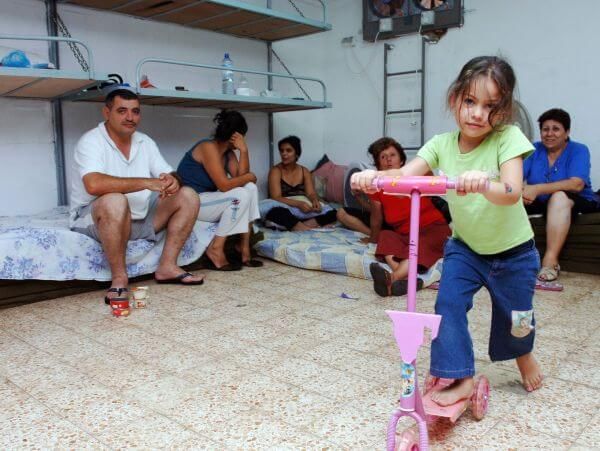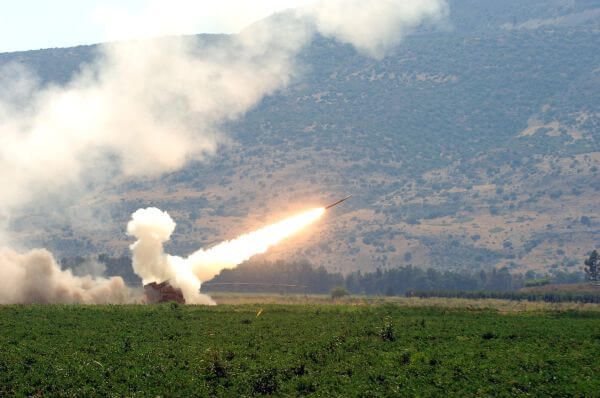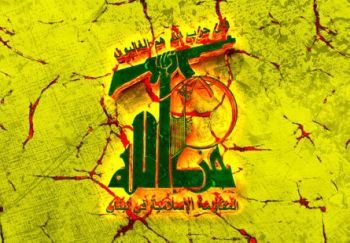Long before the Second Lebanon War, as far back as 1968, Palestinian Liberation Organization terrorists used southern Lebanon as a launching pad for rocket attacks against Israeli towns. The Israel Defense Force had entered Lebanon in 1982 to destroy the terrorist infrastructure responsible for those attacks, and then withdrew in 2000 after squelching the threat.
But in the subsequent years, the Hezbollah terrorist organization built itself up with the military and financial support of Iran. From 2000 to the summer of 2006, Hezbollah attacked Israel using artillery and cross border raids approximately 200 times, killing tens of Israelis and wounding more than 100.
Related reading: The 1982 Lebanon War: Operation Peace for Galilee
Hezbollah sparks the Second Lebanon War
On July 12, 2006, Hezbollah terrorists fired rockets from southern Lebanon into Israeli border towns, injuring five Israeli civilians in an unprovoked attack.
But this rocket strike was a diversion for a different attack.
In a carefully planned raid, a Hezbollah unit fired an an anti-tank missile at two IDF vehicles patrolling the Israeli-Lebanese border, killing three Israeli soldiers. Hezbollah kidnapped two Israeli reservist soldiers –- 31-year-old Technion graduate student and newly married Ehud Goldwasser, and 26-year-old pre-law student Eldad Regev. Five additional IDF soldiers were killed in Lebanon in an immediate attempt to rescue the kidnapped soldiers.

Israel began bombarding Hezbollah targets as well as bridges and roads in Lebanon to prevent Hezbollah from moving the kidnapped soldiers far from the border.
The Second Lebanon War was underway.
Related reading: Who are Israel’s Missing Soldiers?
Hezbollah announced that they would release Goldwasser and Regev if Israel released Lebanese “prisoners” who were being held in Israel. Hezbollah’s list included Samir Kuntar, who was responsible for an especially vicious terror attack in 1979. Infiltrating from Lebanon, Kuntar broke into an Israeli apartment building, kidnapped 31-year-old Danny Haran and his four-year-old daughter, Einat. At a nearby beach, Kuntar shot and killed Danny, then killed Einat by smashing her skull against the rocks.
Israel viewed Hezbollah’s abduction of Regev and Goldwasser as an act of war, imposed an air and naval blockade on Lebanon, launched massive air attacks on Hezbollah targets, followed by a ground invasion.
Join the fight for Israel’s fair coverage in the news
Rocket Attacks on Israel
Armed by Iran and Syria, Hezbollah bombarded Israeli cities with rockets. During the month-long Second Lebanon War, Hezbollah fired over 4,000 rockets at Israeli cities – more than 100 per day. Around one-quarter landed in civilian areas of Haifa, Hadera, Kiryat Shmona, Safed, Tiberias and Nazareth. One million Israelis had to stay within close range of bomb shelters and 250,000 residents were forced to leave northern cities for safer areas beyond rocket range.
The Hezbollah rocket attacks caused numerous forest fires inside Israel. It is estimated that it will take 50-60 years to rehabilitate the 16,500 acres of destroyed forests.

Hezbollah launched these rockets from civilian areas of southern Lebanon and stored their ammunition in residential neighborhoods. This put Lebanese civilians in harm’s way as Israel tried to destroy the rockets and their launchers. Israel dropped leaflets informing civilians to evacuate areas that it had to bomb.
While human rights organizations such as Human Rights Watch and Amnesty International condemned Israel for targeting Lebanese civilians and using disproportionate force, Washington Post columnist Richard Cohen summed up why the allegations were baseless:
The dire consequences of proportionality are so clear that it makes you wonder if it is a fig leaf for anti-Israel sentiment in general. Anyone who knows anything about the Middle East knows that proportionality is madness. For Israel, a small country within reach, as we are finding out, of a missile launched from any enemy’s back yard, proportionality is not only inapplicable, it is suicide. The last thing it needs is a war of attrition. It is not good enough to take out this or that missile battery. It is necessary to re-establish deterrence: You slap me, I will punch out your lights.
Israel has been in dire need of such deterrence ever since it pulled out of Lebanon in 2000 and, just recently, the Gaza Strip. In Lebanon, it effectively got into a proportional hit-and-respond cycle with Hezbollah. It cost Israel 901 dead and Hezbollah an announced 1,375, too close to parity to make a lasting difference. Whatever the figures, it does not change the fact that Israeli conscripts or reservists do not think death and martyrdom are the same thing. No virgins await Jews in heaven.

The Israeli government repeatedly stated that it wasn’t fighting Lebanon, only Hezbollah’s terrorist infrastructure. With weapons depots, missile launchers, and command and control centers in or in close proximity to houses, hospitals, schools, mosques and general infrastructure, the damage to Lebanon was both considerable and inevitable.
The Israel Air Force flew 11,897 combat missions during the month of fighting – more than it flew in the Yom Kippur War and almost double the missions it flew in the First Lebanon War. The IDF fired 170,000 artillery shells, which was more than double what it fired during the Yom Kippur War. 130,000 Lebanese homes in the area where rockets were launched were damaged. 400 miles of roads, 73 bridges, and 900 commercial structures were destroyed. Thanks to Hezbollah’s doctrine of embedding itself among civilians, the Second Lebanon War became a case study of asymmetric warfare. Dr. Shaul Shay explained asymmetric warfare this way:
In asymmetric conflicts, democratic states – who typically uphold certain moral values – are forced to confront non-state actors who do not consider themselves bound by legal or humanitarian obligations. Despite propaganda to the contrary, Israel values human life, while non-state actors, such as Hamas or al-Qaeda, frequently abuse humanitarian principles as a deliberate strategy, placing both their own civilian population and that of the defending state at greater risk. That terrorist groups such as Hamas and Hezbollah operate from densely populated areas illustrates this fact.
Related reading: Debunking the Disproportionate Force Charge
Israel received wide support from Western countries to Arab states. Saudi Arabia declared that Hezbollah was entirely responsible for the war. The United Arab Emirates, Bahrain, Egypt, Jordan, Kuwait, Iraq and even the Palestinian Authority agreed with Saudi Arabia’s description of Hezbollah’s attack against Israel as “unexpected, inappropriate and irresponsible.”
The War’s Postscripts
During the war, 121 IDF soldiers and 46 Israeli civilians were killed, including 19 Israeli-Arabs. Over 4,000 Israelis were injured. Israel killed at least 600 Hezbollah terrorists and injured 1,500. Around 500 Lebanese civilians died during the fighting and over 2,500 were injured. The fighting ended with a UN-brokered ceasefire on August 14. The UN Security Council approved Resolution 1701, which called for the disarming of Hezbollah, the withdrawal of the IDF from Lebanon, and for the Lebanese Armed Forces and a larger United Nations Interim Force in Lebanon (UNIFIL) to deploy in southern Lebanon.
Related reading: Hezbollah and the UN’s Toothless Resolution 1701
 Sadly, the Lebanese army and UNIFIL both stated that they would not work to disarm Hezbollah. Sure enough, Hezbollah has rearmed and just ten years after the war already had 100,000 rockets which could reach anywhere in Israel. In 2019, the IDF exposed and neutralized a number of Hezbollah cross-border tunnels, which UNIFIL acknowledged violated Resolution 1701.
Sadly, the Lebanese army and UNIFIL both stated that they would not work to disarm Hezbollah. Sure enough, Hezbollah has rearmed and just ten years after the war already had 100,000 rockets which could reach anywhere in Israel. In 2019, the IDF exposed and neutralized a number of Hezbollah cross-border tunnels, which UNIFIL acknowledged violated Resolution 1701.
Hezbollah leader Hassan Nasrallah told New TV in an interview on August 27, 2006, “If there was even a one percent chance that the July 11 capturing would have led to a way like the one that happened, would you have done it? I would say no, absolutely not.”
Related reading: All You Need to Know About The Hezbollah Threat to Israel
Even more sadly, Israel was not able to find the captured soldiers. Not knowing if Goldwasser and Regev were alive, Israel agreed to a prisoner exchange two years later, which included the release of Samir Kuntar. The door to the vehicle carrying the two Israeli soldiers opened and two coffins were taken out carrying the remains of the two soldiers.
While there was significant criticism among the Israeli political and civilian establishment regarding the difficulty which a powerful army had in soundly and swiftly defeating a smaller and less equipped terror organization like Hezbollah, Israeli officials point to the fact that the IDF’s strong response re-established Israeli deterrence.
Enjoyed reading this article? Follow the Israel In Focus page on Facebook to read more articles explaining Israel’s history, politics, and international affairs. Click here to learn more!

